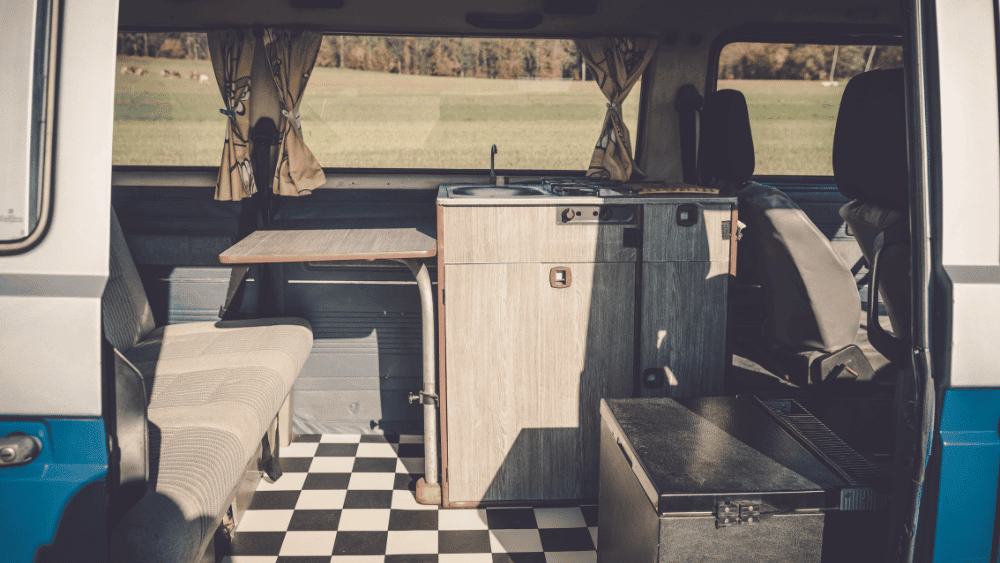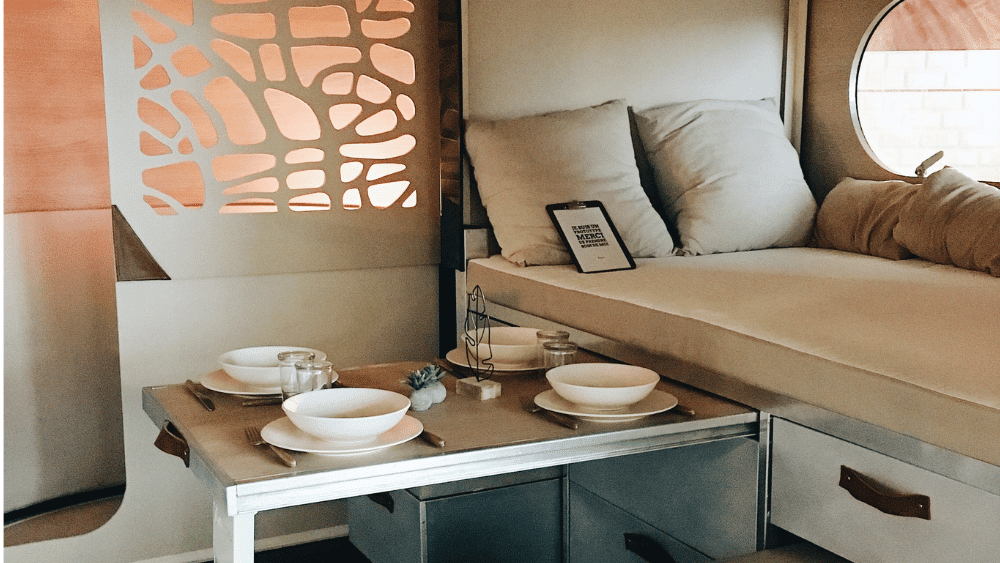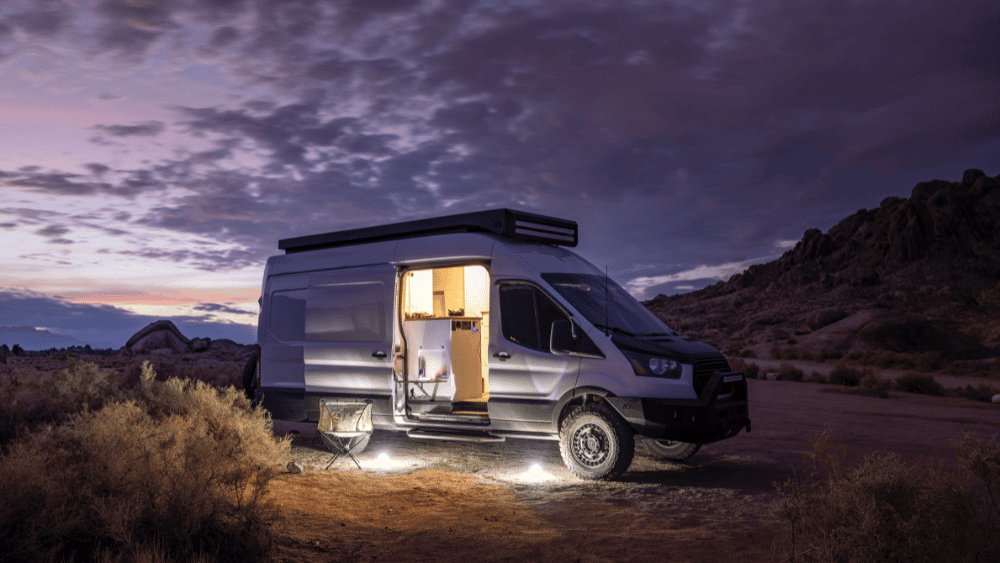While most Americans choose to settle down in a traditional home, it’s not everyone’s cup of tea. A growing number of people of all ages – with and without youngsters – don’t want to be strapped to a 30-year mortgage or dwell within the same zip code for eons. They hear the call of the open road and it’s far too enticing to ignore. Thus, they willingly exchange comfort for breathtaking views and a string of adventures.
Perhaps you hear the faint call in the distance and are still weighing options before you decide to get on the road. Or maybe you have already committed to a van lifestyle and are looking for the right set of wheels. Regardless of where you are in the process, we can help by peeling back all the layers so you can make a smart decision.

The Great Debate – Hire a Pro or DIY
A question that frequently rises to the top of the list is whether you must buy a live-in van (aka campervan) or if it is possible to convert one yourself. The short answer is yes! No doubt, money will dictate the steps you take to get rolling. You can pay professionals to install the conversion kit and make the transformation if you lack the time or skills.
But if there is a DIY gene housed within your DNA, you will be delighted to know you can purchase a conversion kit. Be forewarned: the transformation process can’t be likened to twisting, bending, tucking, and untucking Optimus Prime until he becomes a vehicle. If you omit critical steps, it will be difficult and expensive to backtrack and start over. However, there are helpful online resources to guide you through the entire process.

Points to Ponder Before Converting Your Van
Driving and sleeping are just the tip of the iceberg. Before you begin the conversion project, it’s wise to list your objectives so you can create a strategic plan.
Working 9 to 5? Will you work from your van? If so, you will need to carve out space for a desk and chair. No doubt the driver’s seat is comfy so make sure you also have a comfortable chair in your work environment. If working remotely, you’ll want to ensure you can connect to the internet. While many Americans can do without certain amenities, electrical hookups are generally non-negotiable.
See the sights. If your goal is to see the country, you won’t want to limit the view. How many windows are currently in the van and how many do you want to add?
All aboard! How many traveling companions will board your van for the grand adventure? Will you take pets along for the ride? While you are making conversion calculations, you will want to factor in the total of two and four-leg occupants.
Space out. Perhaps you have noticed when unpacking new sheets from their plastic casing that it is impossible to refold and repackage. It can be a mind-numbing experience. The point is – you will need enough space for everything from sheets to towels to paper goods and plastic containers. And don’t forget food and cooking utensils. Plan before you build to make sure every essential thing will have its place.
Electronics. Even if your want to explore the wilderness, or just park in a campground and meet others who share your passion for van life, you may want to take a small television – and a laptop and tablet. Predetermine how you will power these gadgets.

Skills Required
The advantage of some DIY kits is that you can break tasks down into ones that are manageable for you. It can be overwhelming if you look at it as one massive task. Decide to only tackle the projects that you know you can handle and hire a professional to do the heavy lifting, such as installing the plumbing and electrical systems.
Which Vans are Conversion-friendly?
The spacious interiors of the Ford Transit van make this a fan favorite. And while you will be sitting and sleeping most of the time, you will want to ensure there’s plenty of space overhead.
Mercedes-Benz Sprinter has a 68-inch span from floor to ceiling. But a high roof Sprinter gives you 79 inches. Another dimension to consider is the van’s interior width.
The Dodge Ram Promaster is 75.6 inches wide, whereas the Ford Transit is a mere 70.2 inches. When you are space-constrained in a van, every inch counts – especially when you need to add insulation or a refrigerator.
The 4-cylinder Nissan NV200 is a compact van and standing up isn’t an option – but it’s the least expensive on our list. And rounding out the lineup is the affordable Chevy Astro Van.

Finding the Right Price for Your Budget
The price tag on your van conversion is much like buying a traditional home. Do you want plain vanilla or all the bells and whistles? Will no-name cabinetry suffice, or do you want something sleek and more fashionable? If you intend to live and work in your converted van, you will probably want to invest in a plumbing system – and not revert to the days of America’s first pioneers. Those who live off the grid may want to add a shower, along with a sink and toilet, unless you plan to stay for extended times in a campground and utilize those facilities.
If you are looking for a time-saver modular system, check out Adventure Wagon. They offer a menu of options that allow you to configure the interior design – from the internal frame to the electrical system to its nearly magical storage compartments. And you can browse their products to gain pricing information on refrigerators and electrical systems. The conversion kits begin at $13,000.
If you are cramped for space, consider adding an elevator bed to your shopping cart. The lower end of the pricing scale is $2,850 but it’s a clever way to go vertical and double your sleeping space.

Managing the Temperature to Keep your Cool
You can configure your home on wheels according to the number of residents to ensure that everyone is toasty inside when it’s frosty outside. And you will also want to sleep in cool comfort during those hot summer nights.
If price isn’t a factor, and you want a custom van, ZENVANZ can accommodate you and turn your van into a high-end dream on wheels. They also offer DIY kits that begin at $18,000 for a standard length and $22,000 for a van with a long wheelbase.
If you are ready to minimize your lifestyle and create your version of the American dream, keep this guide close at hand. While you won’t be able to predict what each day on the road will bring, you can expect to make enough memories to last a lifetime.
